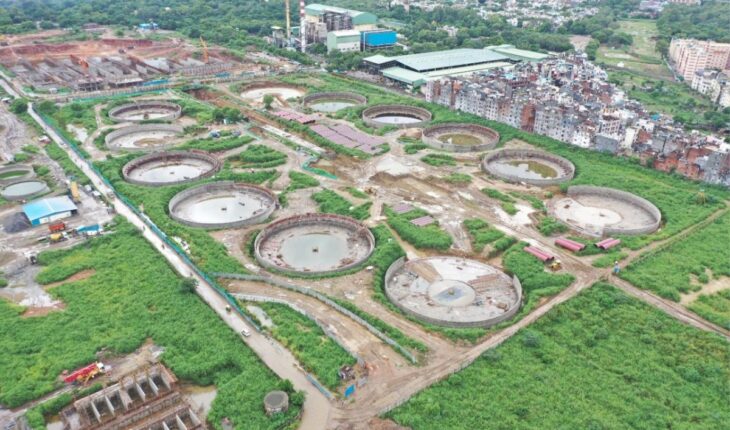New Delhi : The Delhi government is getting Asia’s largest wastewater treatment plant built in Okhla, where 564 MLD of sewage can be treated daily. The project is in its final phase, and Delhi Water Minister Atishi inspected this plant recently.
Upon observing the delay in the project, the minister pulled up the officials and directed them to complete the project by the end of this year.
During the inspection, Atishi said, “This plant with a capacity of 564 MLD is going to be a game-changer in the direction of cleaning the Yamuna. After this plant is operational, instead of directly releasing millions of litres of sewage into the Yamuna every day, it will be treated and then discharged. After the operation of this plant, the Biological Oxygen Demand (BOD) level of polluted water can be reduced to 10. The water treated from the plant will not only help in cleaning the Yamuna but will also be useful for gardening and other purposes.”
During the visit, the Delhi Water Minister found that the project was behind schedule. Instructing officials, she stated that the remaining work should be completed by the end of the year with the new timeline. Progress reports should be submitted to her every Monday. Emphasizing the significance of these plants in clearing the Yamuna, she insisted that any delay in their construction would not be tolerated.
She further expressed that cleaning the Yamuna is the priority of the Kejriwal government, and significant efforts are being made in this direction at a war footing. Delhi government officials are working round the clock to ensure this as per CM’s directions.
While briefing the Delhi Water Minister, officials stated that the sewage from most parts of Central Delhi (mainly in the NDMC area) and South Delhi will be directed to this plant. Utilizing advanced technologies, including UV, the sewage water will be treated, and the Biochemical Oxygen Demand (BOD) levels will be reduced to up to 10. Only after this process will the purified water be released into the Yamuna.
Through this plant, 40 lakh people will benefit as it will work to treat sewage from a significant population area in Delhi. This plant is the largest wastewater treatment plant in Asia, which alone will treat 15 to 20 per cent of Delhi’s sewage. After treatment, the water’s Biochemical Oxygen Demand (BOD) will reach a level where it can be used for various purposes, including gardening.
This plant will fulfill half of its energy requirements through the production of green energy. Using the biogas derived from sewage sludge, the plant can generate 4.8 megawatts of electricity. Additionally, the waste-to-energy plant can be operated using the sludge, and it can also be utilized for gardening and other purposes.





